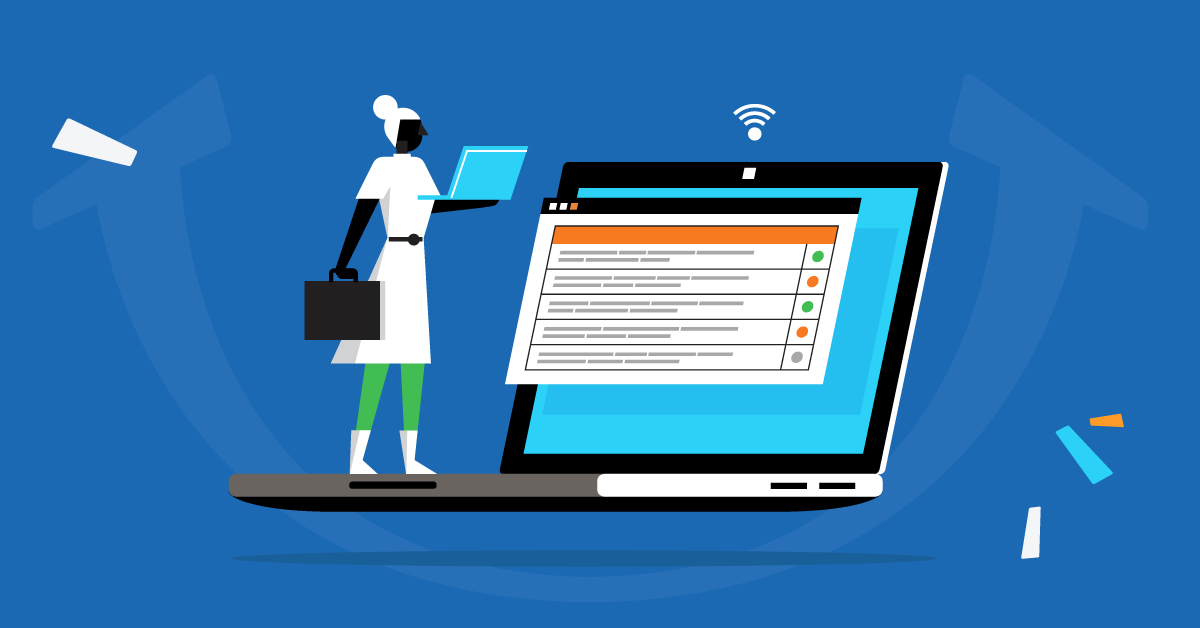Let’s face it, the post-pandemic era has reshaped the business landscape, presenting new challenges that demand agility and constant upskilling. Remote work, digital transformation, and AI integration are no longer futuristic concepts—they are the new norm.
As industries evolve at an unprecedented pace, companies are confronted with a stark reality: the skills that propelled them to success yesterday may not suffice tomorrow.
How can businesses stay ahead of the curve in a constantly evolving world, where skills become obsolete almost as soon as they are acquired?
The answer lies in proactive, continuous training programs.
Investing in employee training programs can help you close and stay ahead of the fast-moving skill gap. With proper training, your workforce is equipped to meet the demands of today and prepared for the challenges of tomorrow.
If you are beginning or improving current programs, this guide will lead you through the necessary stages to construct a strong and efficient training program for employees.
What is an employee training program?
An employee training program is a plan to improve the skills, knowledge, and abilities of an organization’s workers. Investing in it strategically helps boost worker efficiency and overall efficiency of the organization.
Employee training and development is meant to close the gap between current skills and the proficiency needed for their roles. Another term often used in this context is upskilling and reskilling.
The importance of employee training programs cannot be overstated in the post-Covid-19 and AI era. As industries change at breakneck speed, companies must make sure their employees have the skills to adapt, succeed and stay relevant.
When we look at the half-life of modern-day skills, the importance becomes even more evident. The current half-life of skills is around two and a half years, meaning that the value of certain skills decreases by half within this period.
For example, if a coder masters a programming language today, in two and a half years, that language may be outdated or require significant updates to remain competitive in the field. Compare this to 2005, when the half-life of a skill was estimated to be 15 years, and you can see how the need for constant upskilling and reskilling has grown.
How to choose the best employee training program
Before you can choose the best training program for you, you first need to identify what your business needs, the skills you have, and who you’re going to train.
Identify business needs
Defining your desired outcomes will help shape the training program’s focus while aligning it with your overarching business strategy.
To do this, you need to define a few things like:
- What are your goals and objectives?
- Do you want to increase sales by X%?
- Improve customer satisfaction rates?
- Improve the efficiency of operations?
Also, consider any upcoming changes or challenges that may call for new skills or training. Is your company getting new software or tech? Going into new markets or product lines? Getting ready for industry changes or rules?
Anticipating these upcoming needs can help you get ahead by creating training programs to improve your employees’ skills.
Assess skills gaps
Conduct a comprehensive skills gap analysis to pinpoint the areas where your employees need training and development. A skills assessment will also help identify the areas where training can have the most significant impact.
One way to do this is to check their current skill levels in areas such as negotiation, project management, or technical knowledge.
Try to pinpoint what skills to work on that are essential for business operation or align with your business needs. Perhaps your sales team requires better pitching skills, or your customer service representatives could benefit from leveraging new communication techniques.
Identify the target audience
Clearly define the target audience for the training program. Who needs the training? Is it a specific department, such as sales or marketing, or is it a company-wide initiative?
Keeping your audience in mind means you can tailor things like training content, delivery methods, and overall approach to their needs and avoid the one-size-fits-all dilemma. That way, you can create highly effective and targeted employee training programs.

9 steps to create an effective employee training program
To create an effective employee training program, you’ll want to follow these 9 steps.
Step 1: Identify training needs
As mentioned above, you need to assess which business needs you should prioritize. Then, figure out what skills you need. Finally, identify the target audience i.e., the people who will benefit from taking the training. It’s best to do the introspection correctly before you can move on.
Step 2: Set training goals and expectations
Setting clear and measurable goals is going to help you measure how effective your employee training program is. Without them, you will have a hard time understanding how well a program is doing and if it’s reaching its goals.
When setting training goals, it’s best to match them with your company’s main business goals and the needs you identified in the previous step. These goals should be specific KPIs. For example:
- If you’re trying to boost customer service, you could monitor stuff like a 10% bump in customer happiness scores or a 15% dip in customer complaints over the first six months.
- If you’re aiming to improve technical skills, you could set goals like hitting a 90% pass rate on certification exams or cutting down error rates in technical processes by 20%.
Step 3: Choose your training software
Selecting the right employee training software is a big step that is often taken for granted.
The software you choose will serve as the platform for delivering your training materials, tracking progress, and engaging your employees. One holistic option to help you centralize all your training efforts is investing in a learning management system (LMS) like TalentLMS.
Here are some things you may want to consider when choosing an LMS:
- Accessible and intuitive interface
- AI-powered course creation e.g., TalentCraft
- Wide selection of ready-made courses e.g., TalentLibrary
- Reports and analytics
- Blended learning
- Gamification
- Certifications
- Automations
- Integrations
It’s always a good idea to book a demo with providers to find out more about the product and how it can suit your needs.
An LMS suited to your employee training and development needs is a must.
Step 4: Generate training material
Once you’ve identified the training needs, set goals, and chosen the software, it’s time to create the actual training content.
Keep these tips in mind as you create your content to help you develop compelling training materials:
- Use different types of media like videos, infographics, animations, and interactive simulations to appeal to different learning styles and keep learners interested.
- Storytelling makes the information more relatable and memorable. Turn your training content into a captivating narrative or real-life scenarios to help your audience learn better.
- Break down complex topics into smaller, digestible modules or micro-learning units. Doing this prevents cognitive overload—a problem many employees highlight as a roadblock to learning in the TalentLMS 2024 survey on The State of Upskilling & Reskilling.
- Use gamification elements such as points, badges, leaderboards, and challenges to make the learning experience more enjoyable and memorable.
- Use collaborative learning by incorporating group discussions, collaborative projects, or social learning features within your training program.
- Customize the training content to each of the learners’ needs, roles, and skill levels for a more focused and helpful learning experience.
To help expedite this step, you can leverage your LMS’s AI tools or ready-made courses.
AI tools, such as TalentCraft, can easily create interactive and engaging training materials in minutes. They can also mix different types of content, like text, pictures, videos, quizzes, and more, to create an engaging learning experience.
Another way to get relevant content to your learners is with ready-made courses like TalentLibrary. The collection covers a wide range of skills your team needs to succeed with over 1000 courses.
These tools help kickstart your employee training program and help you reach your goals.
Step 5: Select training method (or methods)
Next up, you need to decide how you will deliver your training. The employee training method you choose has to match your target audience and the skills or knowledge you want to teach.
Let’s walk through some common training methods to consider:
- Instructor-led training (ILT): Also known as the traditional method, where an instructor leads learners in a physical or virtual setting. It’s ideal for hands-on training, role-playing, and engaging group discussions.
- Online learning (eLearning): Online training modules, video tutorials, and interactive courses help employees learn at their own pace, from anywhere. It is also cost-effective solution that’s scalable, and can be easily updated.
- On-the-job training (OJT): With OTJ, an experienced worker trains new hires or upcoming employees at work and in real time. OJT is very practical and helps employees learn in a real-world context. It also helps with preparing employees to take on new roles from retiring employees.
- Blended learning: A blended approach is a combination of different training methods, such as ILT sessions combined with online modules or job shadowing. Blended learning caters to different learning styles and reinforces learning through multiple channels.
When selecting your training method(s), keep the following in mind:
- Hands-on skills may be better taught through instructor-led or on-the-job training, while theoretical knowledge can be effectively delivered via eLearning.
- Younger employees may prefer more interactive and technology-driven methods, while older workers may respond better to traditional classroom settings.
- Asynchronous, online training may be more cost-effective than other training methods, but having a blended learning experience is usually the best practice.
The most effective approach often combines multiple training methods to reinforce learning and cater to different learning styles and preferences.
Step 6: Deploy the training
Once you have your training materials ready, it’s time to deploy the training program.
Here, you will roll out your training, which could involve creating schedules and assigning modules or instructors to the respective employees. As you create a training schedule, consider your employees’ availability and workload.
When you start deploying, you should clearly communicate the training program’s objectives, benefits, and expectations to employees. Doing this helps them to see what they are aiming for and what you expect, which could in turn help motivate them to do their best.
Step 7: Measure your success
Remember the KPIs you set earlier? Now you are going to use them to see if your training worked.
Check if your training resulted in better performance regarding the KPIs that you set. Did you hit the sales target? Did your employee’s productivity get better?
Alongside these KPIs, you will need to use qualitative data to help you gather more specific feedback. You can collect this type of data using post-training surveys.
When designing your post-training surveys, consider including questions that address:
- Relevance and applicability of the training content
- Clarity and organization of the training materials
- Effectiveness of the training delivery methods
- Opportunities for skill application and knowledge transfer
- Overall satisfaction with the training experience
- Suggestions for improvement or additional training needs
Step 8: Adjust and adapt your training as needed
Once you’ve reviewed your KPIs and gathered qualitative feedback, it’s time to take action based on what you’ve learned.
To start, you can analyze the data you’ve collected to see where your training program is succeeding and where it’s falling short. Are certain modules not meeting their objectives? Is there a gap in the content that needs to be filled? Use this analysis to identify specific areas that need improvement.
Based on your findings, revise your training content, delivery methods, or even the goals you’ve set. You could add new materials or try different training methods that work better for your employees.
After making adjustments, redeploy the training program and closely monitor the results. This process of checking, changing, and checking again will help you refine your training program so that it keeps getting better and better. And one to ensure you’re deploying a successful employee training program.

TalentLibrary – Skills that matter, courses that deliver
With TalentLibrary, you set the foundation for a strong, aligned workforce—soft skills, compliance, and workplace essentials, from day one (and beyond).
Step 9: Make continuous learning part of your company culture
Continuous learning and employee development should be ingrained into the fabric of your organization. A one-time training program is rarely enough to keep skills sharp and employees engaged.
Instead, encourage a mindset of ongoing training through:
- Encouraging people to join in ongoing training with rewards, games, or cash bonuses.
- Celebrating employee learning milestones and accomplishments on a team and company level.
- Making it easy for people to find and use training materials whenever they want and motivating them to learn independently.
- Allocating time and budget for employees to attend conferences, workshops, or obtaining certifications.
- Encouraging knowledge sharing by letting employees lead training sessions or starting an internal mentoring program.
- Making learning a core value that leadership reinforces.
Examples of employee training programs to choose from
Many different employee training programs are available, so it’s important to familiarize yourself with the options to choose the most suitable ones for your company’s needs.
Onboarding training programs
Onboarding training is all about getting new hires up to speed with the company’s culture, values, rules, and processes. It usually includes things like job duties, how to act at work, and where to find company resources. It could also apply to employees who transition to new roles or departments.
Technical training programs
Technical training focuses on learning the skills and knowledge you need for a certain job or task. Technical training can include training on using software, understanding products, or getting industry-specific certifications.
Soft skills training programs
Soft skills training is all about improving how you interact and collaborate with others. It covers things like being a good leader, working well with a team, dealing with problems, and understanding your emotions.
Compliance training programs
Compliance training makes sure that all employees know and follow the laws, rules, and company policies. It covers things like keeping the workplace safe, preventing harassment, and protecting data.
Sales training programs
Sales training helps sales teams learn the skills and knowledge required to sell products or services effectively. Sales training can involve understanding the products, learning sales techniques, and improving customer service strategies.
Leadership development programs
Leadership development programs are designed to improve leaders’ skills or equipp employees with leadership skills for management or executive roles. These programs often involve mentoring, coaching, and hands-on leadership experiences.
Diversity and inclusion training programs
Diversity and inclusion training promotes an inclusive workplace culture that is all about raising awareness about diversity, unconscious biases, and discrimination prevention.
Customer service training programs
Customer service training is all about training employees to talk with customers better, deal with complaints, and ensure customers have a positive experience.
Future-proof your business
Due to the rapid decrease in the half-life of skills, what once took more than ten years to become obsolete now happens in a matter of two and a half years. To stay competitive, businesses must prioritize continuous learning and development and embrace it as part of the company culture.
Learning and adapting not only improves employee performance and development but also secures your business’s future in a changing environment.
Using one of the best employee training tools, like TalentLMS, can help you simplify the creation of your employee training program. It can save you a lot of time and resources and get your employee training up and running in no time.
Ready to give it a try? Sign up here.
Originally published on: 22 Nov 2019 | Tags: Employee Training




